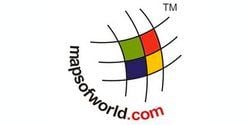Villach, Austria on the river Drau (Slovenian Drava) is the 2nd largest city in Carinthia in the south of Austria and represents a crucial traffic junction for Austria and the whole Alpe-Adria region.
The center is situated on the western border of the Klagenfurt Basin at the merging of the Drau and Gail rivers. The municipal area borders are surrounded by various lakes, among them are Ossiacher See, Faaker See, Silbersee, Vassacher See, Magdalene, and St. Leonharder See. Villach is also skirted by the mountains of the Alps, great for skiing in winter and hiking in summer.
Villach’s human habitation dates back to 3500BC, and in Roman times it finds mentioned as a strategic junction on the important Roman road called the Romerweg, the market town status is achieved in 1060, although first really mentioned in 1240. Two major earthquakes in 1348 and 1690 and several fires destroyed large parts of Villach, Austria. Precious little happened until World War II when the town was bombed several times by the Germans, which killed about 300 people and battered more than 1000 buildings, yet Villach quickly recovered. Nowadays Villach is a busy city with thermal baths and traffic, though it holds on to its historic background.
Location – Situated half an hour by train or car from the perimeter to Italy or Slovenia, its coordinates are 46°37’30?N, 13°50’3?E
Reaching there – Villach, Austria can easily be reached by train from all major Austrian cities, especially Vienna. It is also served by quite a few major highways too.
Sightseeing – Although Villach, Austria is situated amidst picturesque settings yet it has no particular points of interest for the tourists unless it happens to be the placid lakes and verdant mountain valleys. However, it is the site of a vibrant cultural scenario, allowing the growth of many fairs throughout the year, like:
- The carnival in Villach (it starts on November 11 and ends on March 4)
- The arts and crafts festival (with self-made goods)
- The streets-art festival (with performances of artists and singers)
- The “Villacher Kirchtag” (a whole week in summer)
- Performances at a stage along the Drave.
The ruins of the prehistoric and Roman eras can also evoke a spirit of a haunting past.
Accommodations – Villach, Austria provides accommodation to all types of travelers, the island on Faaksee lake holds a unique hotel.
Villach, Austria is a celebration of the strength of the Austrian spirit to bounce back from all adversities.
 Mayrhofen, Austria
Mayrhofen, Austria